#movement patterns
Explore tagged Tumblr posts
Text
Activity Profile During Action Time Between Winners And Losers Of Young Male Silat Tempur Athletes
AbstractBackground and aim. The purpose of current study was to describe the detailed activity that occurs during the fight time of silat bouts between winners and losers among young male athlete in national silat tempur competition. Problem. There is less research that specifically describes the activity involved in silat tempur that specifically describes the activity that contributes to the…
#action time#activity profile#agility in martial arts#athlete performance analysis#combat effectiveness#combat sports analysis#competitive Silat#fighting strategy#martial arts performance#match performance evaluation#movement patterns#physical fitness in Silat#reaction time in Silat#silat competition#silat tempur#Silat Tempur training#Sports Science#tactical performance#winners vs losers#young male athletes
0 notes
Text
How to Train Your Nervous System Like a NINJA
In this video, I discuss how you can train your central nervous system. Get stronger and more skilled by training the brain!
Training your muscle will only get you so far. If you want to tap into your true potential, then you need to develop on what actually controls that muscle: the central nervous system. All of us have a vague idea that the central nervous system is important for strength and performance, but how many of you actually know what it is, how it works, and how to target it in your training to make it…
0 notes
Text
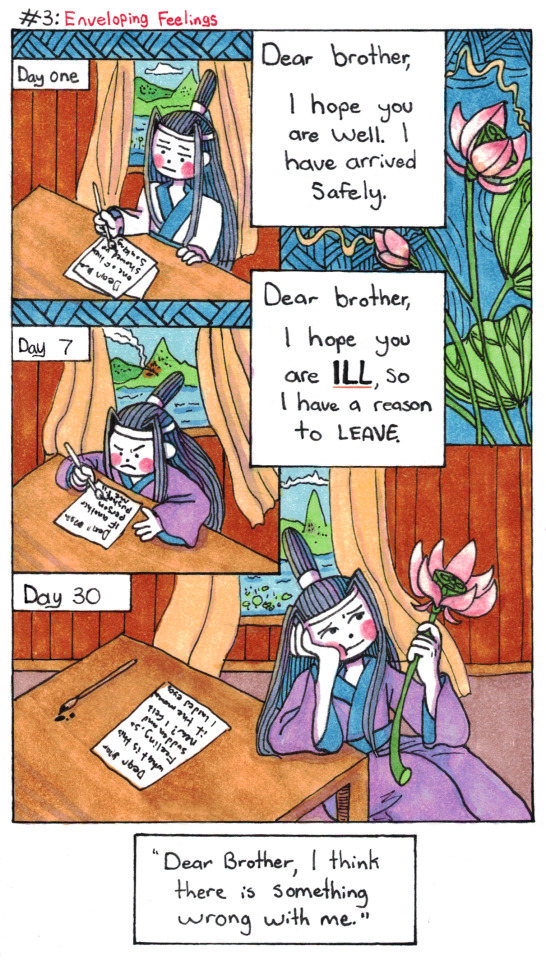
Lan Wangji Goes To Lotus Pier AU: Part 3: Enveloping Feelings.
(Part 1, Part 2, Part 4)
#poorly drawn mdzs#mdzs#lan wangji#Yungmeng Jiang training arc AU#I wanted to try out a different paneling style for this one - sorry I'm a day late! (there will still be a post tomorrow to keep on track)#The original 3 panel comic idea was fine but the point of this new schedule was to take time to push myself a bit more.#I was taking a look back through some comic artists I felt inspired by#and I really loved how Lynda Barry fills her gutters with patterns and doodles!#Obviously I'm not going as absolutely wild with it as she does but it was a great exercise!#I truly think the gutters are the most important and most overlooked part of any comic. There's lots going on in that space.#It's the same with timeskips. The implied movement between moments that we don't see changes depending on how wide that gap is#You're here for the funny tags so here's some that ties this time talk together:#I think LWJ was thinking about that second note from day 2 but it took him 7 days of hazing to commit it to paper.#I think he sends it a day later and immediately regrets it. Chasing down the messenger and everything.#You know if something actually happened to his brother he would never ever forgive himself for putting the bad vibes out there.#Third time skip was the hardest because there was so many possible flavours of jokes here. Day 8/9 was a personal favourite.#day 14 was also funny (week by week). I think the debate on 'how long does lwj take to catch feelings' is more or less:#'how long does it take for him to arrive at a particular stage of grief and yearning (and awareness of it all)#This is a symphony. There is an act by act structure. Every day he is fighting to keep his old sensibilities. He is losing so badly.#(I'll be returning to the main comic soon but there is more of this AU to come!)
2K notes
·
View notes
Text
cybertronain body laungue + optic stuff





This is vary messy, mostly for personal use. I had all these rules written down, but I thought a visual guide would be better.
extra notes
how a bot usually holds their plating can tell you a lot about them,
it can also tell you a bit about their relationship with others depending on how they hold it around them
Some bots are more expressive with their plating than others.
#transformers fan continuity#transformers#tfs#transformers synergize#art post#text post#maccadam#red shakes a lot#pattern movement/plate dancing is sorta like a bird dance#cybertronian lore
797 notes
·
View notes
Text
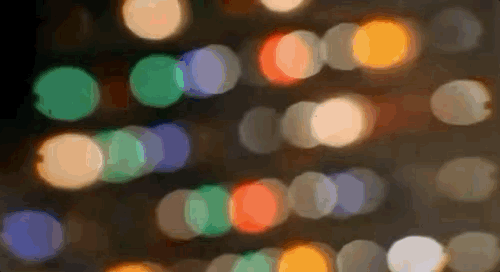
91 notes
·
View notes
Text

my favourite airi card!
#pjsk#project sekai#airi momoi#airi pjsk#pink#i started this with the mindset of doing something simple#well#i think the movement came out pretty sweet#aw fuck i forgot the morse code pattern#whatever
203 notes
·
View notes
Photo

"Wake Patterns" by Unknown Artist ☀ Rippling geometry splits calm waters
105 notes
·
View notes
Text
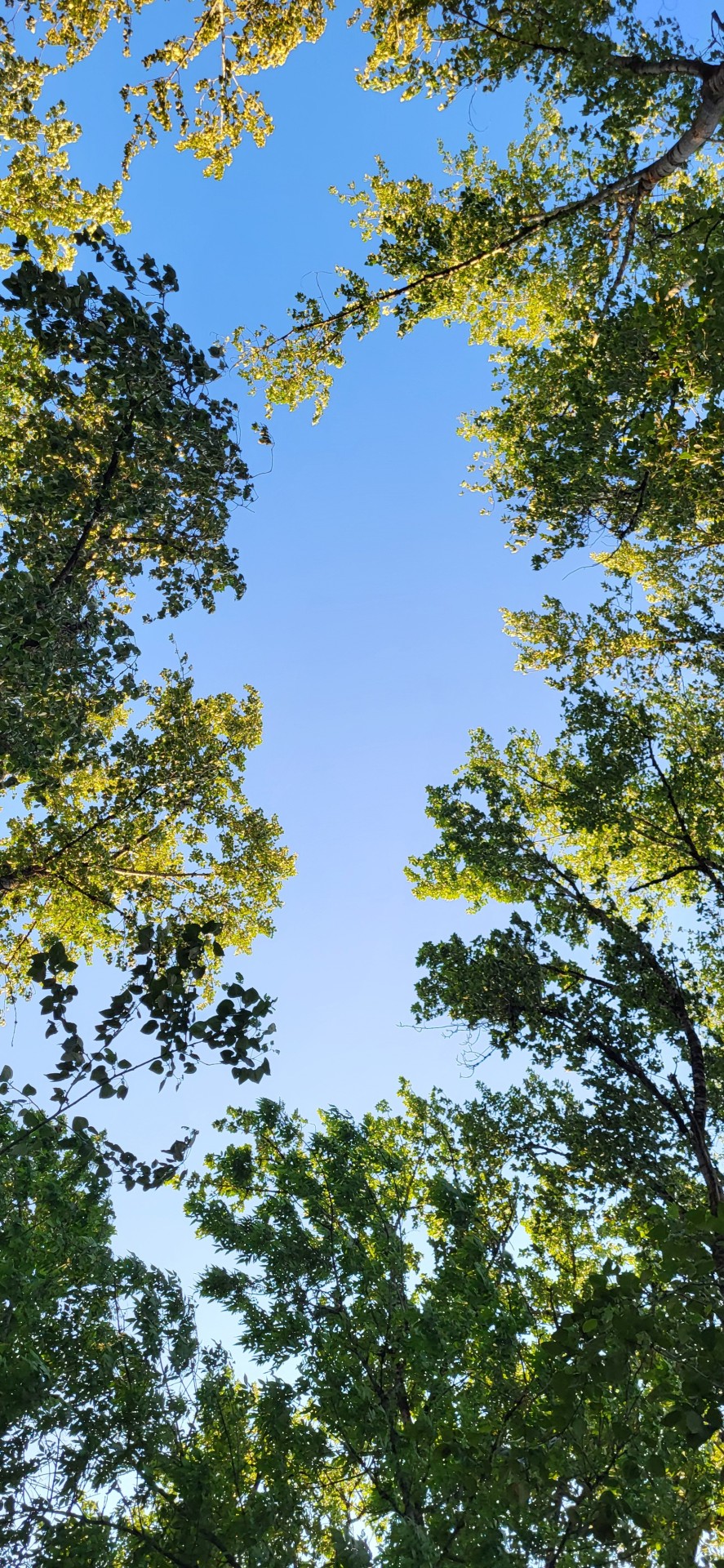

06/01/25
#blue sky#cottonwood trees#photography#nature#pnw#my photography#pacific northwest#green#yellow green#adventures#my walk today#trees#spring#sky#peaceful#beautiful#landscape#patterns#look up#wind#breeze#movement
68 notes
·
View notes
Text

At One with the Music By Jeff Stanford, 2025
Buy prints at: https://jeff-stanford.pixels.com/
#© Jeff Stanford#portrait#woman#vibrant#gold pattern#movement#elegance#dance#light#color#dynamic#midjourney#midjourneyart#digitalart#artwork
116 notes
·
View notes
Text
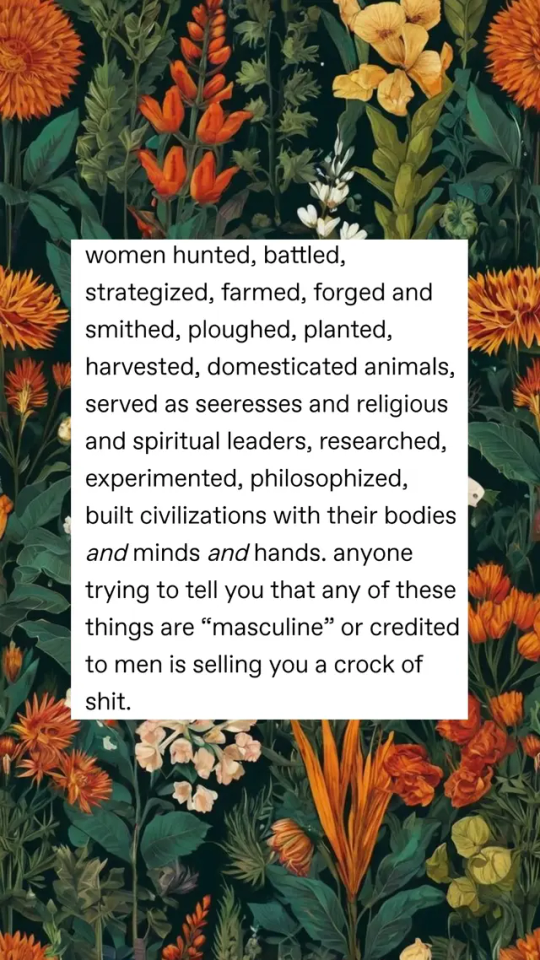
@gatekeeper-of-witchcraft
#radical feminism#feminism#cottagecore#aesthetic#nature#naturecore#moodboard#radical feminist#feminist#flowers#wallpaper#nature wallpaper#nature paper#nature pattern#arts and crafts#feminist movement#radical#socialism#history#archaeology#feminist history#feminist archaeology#history of women#womens history#country cottage
30 notes
·
View notes
Text
i'm fascinated by habit's body language
#he can't stop moving#or circling things like prey#he's so bouncy#and he cant sit or stand or even keep up a pattern of movement#and im fascinated#and its not just because i'm gay#and that's checkmate
29 notes
·
View notes
Text
But yes – sure, “Free Palestine!” supporters are worried for the Palestinian children. This man was so concerned “for the children”, in fact, that he directly copied Hamas’ efforts and…shot children to demonstrate his concern for children. Likewise – again imitating Hamas and so many other so-called Pro-Palestinians – he held individual children responsible for the imaginary crimes of a Christian elementary school/imaginary crimes of a nation, and attempted to kill them for it. And planned to do so again. Oh, and it’s not even done! To cap it all off, he planned to use his own "child" as a weapon to kill more children, in his concern “for the children”. Just like Hamas and the Palestinians themselves, who regularly send their own children as suicide bombers to Israel to kill Jews; who systematically brainwash their children into thinking their lives are only worth however many Jews they can kill.
There is no sense here; there is no moral high ground, there is no freedom or justice or actual concern for anyone. There is only unreasoning, bigoted hate and a manic love of death.
The children he shot -- 5 and 6 years old, respectively -- are alive, thank God.
#palestine#pro palestine crimes#so called pro-palestinians#disturbing#tw: assault on kindergartners#the kids are alive thank God#Israel#hamas#antisemitism#oh look there it goes -- time to hate and kill the Christians too!#gee it's almost as if that's a proven historical pattern#current events#news#america#american events#hamas is evil#free the hostages#the inherent hypocrisy of the pro-palestinian movement
37 notes
·
View notes
Text

“Static Potentials"
[Fragments series]
by michael mathews
mixed media & collage on gallery canvas
12x12 inches
2024
www.michaelmathewsart.com
#abstraction#abstractpaintings#contemporaryart#art#abstractart#collage art#fineart#transientcolors#michaelmathewsart#artists#patterns#movement#abstractcollage#cutandpaste#analogcollage
63 notes
·
View notes
Text

42 notes
·
View notes
Photo

"Futuristic Composition" (1918) by Aleksandra Ekster ⬣ Geometry breaks its own rules
31 notes
·
View notes
Text
Who says the episode title phrases in each episode of Wolf 359?
I've created a spreadsheet to show which character says the episode title phrase (i.e. the words which form the name of that particular episode) in every episode of Wolf 359. Graphs summarising this data can be found below, but to look at the full spreadsheet in all its glory, and see the progression through the series, you can follow this link: https://docs.google.com/spreadsheets/d/1cQLkhxbDAItU6rdiUAYGn54FXXxYC-JXlCmP_Dqe9FA/
(Please note: I’ve focused here on which character first speaks the exact title phrase within the episode itself. In some cases, this is not the only - or the most significant - time that the title phrase is spoken.)
EDIT: This post previously stated incorrectly that "the devil's plaything" is not said in Ep57. In fact, it is said by Pryce (through Minkowski). Thank you to @yaghoulghosty for pointing this out!
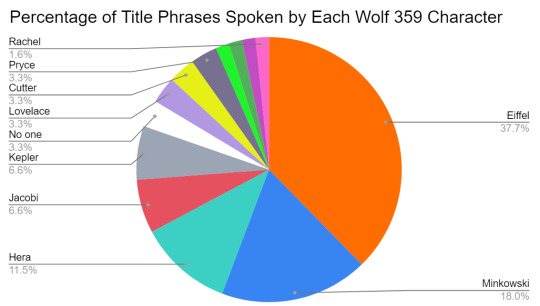
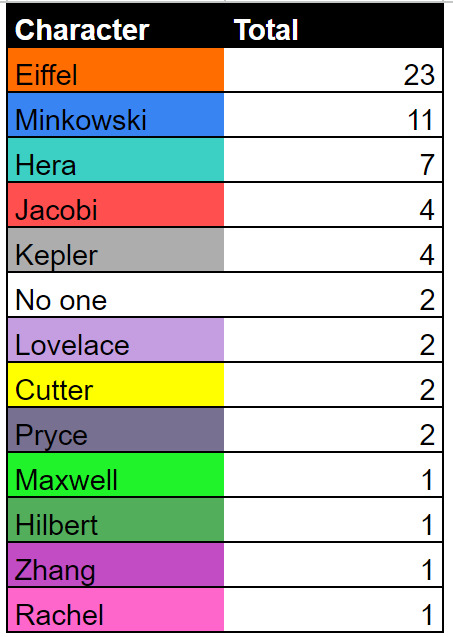
Season breakdown graphs below the cut...
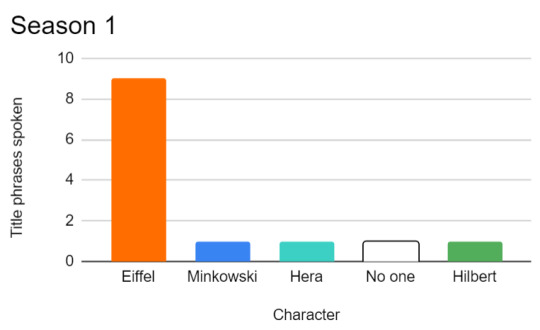
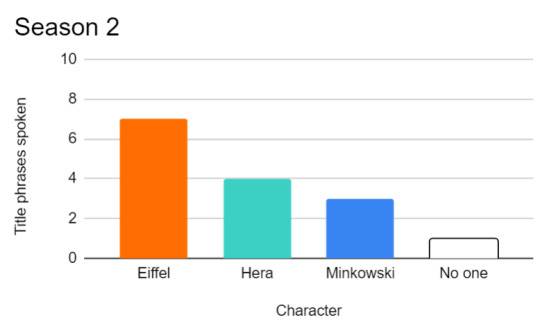
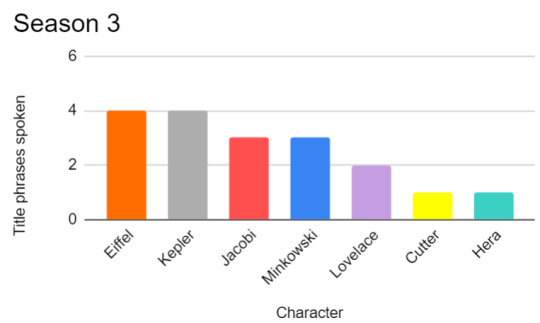

#Wolf 359#w359#the empty man posteth#I think I'll reblog this with properly worded thoughts about the patterns at some point#but for now I'd like to draw attention to a couple of things:#(1) the proportion of Eiffel title phrases reduces as the show progresses#reflecting both the movement away from a sole focus on Eiffel's narration#and perhaps the balance shifting more towards drama rather than comedy over time#(Eiffel is particularly good at coining a comedic turn of phrase)#(2) After the SI-5 are introduced#there's 5 Kepler or Jacobi title phrases in a row#solidifying the SI-5's presence in the show#If you view the title phrases as often referencing the key problem or issue of that episode#then I think it is significant who expresses it#Please do feel free to share your own thoughts!#On a personal note:#when I make things like this#it seems kinda absurd that I only started properly considering the idea that I might be autistic this year#I'm sure all the neurotypicals are regularly making spreadsheets and graphs about the fiction podcasts they think about constantly...
228 notes
·
View notes